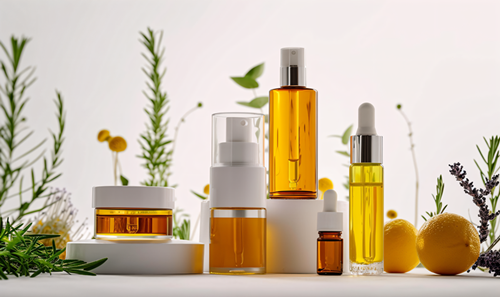On March 29, 2024, China’s National Institutes for Food and Drug Control released the "Guidelines for Submission of Cosmetic Safety Assessment Information for public comments.

Based on the principles of risk management, the "Guidelines for Submission of Cosmetic Safety Assessment Information (Draft for Comment)" classifies the scenarios for the submission of cosmetic safety assessment data; it also establishes key points for self-inspection of cosmetic safety assessment reports to guide enterprises in conducting product safety evaluations.
1. Classification of Cosmetics
Referencing the classification rules in the "Cosmetics Classification Rules and Catalogue," cosmetics are categorized into three risk levels based on efficacy claims, areas of application, product formulations, and target user demographics. This categorization also takes into account the risks associated with different types of products, incorporating additional dimensions such as the use of new ingredients under monitoring periods or nano-materials, the necessity of using instruments or tools, and the pH range.
2. Key Points for Self-Inspection of Cosmetic Safety Assessment Reports
The safety assessment of cosmetic ingredients can utilize the following types of evidence:
- Safety tests of ingredients listed in the "Safety and Technical Standards for Cosmetics" for restricted components, approved preservatives, approved sunscreens, approved colorants, and approved hair dye agents.
- Assessments and conclusions related to cosmetic use by authoritative bodies such as the Cosmetic Ingredient Review (CIR) in the United States, the Scientific Committee on Consumer Safety (SCCS) in the European Union, as well as published safety limits or conclusions by the World Health Organization (WHO), the Food and Agriculture Organization of the United Nations (FAO), the European Food Safety Authority (EFSA), the European Medicines Agency (EMA), the U.S. Food and Drug Administration (FDA), and the food and drug regulatory authorities in China, along with fragrance ingredient standards released by the International Fragrance Association (IFRA).
- Other types of evidence: historical safety data from food consumption, assessments of ingredients with a safe usage history of three years, the Threshold of Toxicological Concern (TTC), and cross-referencing methods.
NMPA previously issued a notice on the release of the "Technical Guidelines for Cosmetic Safety Assessment (2021 Edition)" (Notice No. 51 of 2021), which stipulates that after May 1, 2024, cosmetic registrants and filers will transition from the simplified product safety assessment reports to the complete version of the reports. The most significant difference is that the complete safety assessment reports will no longer use the highest historical usage amounts listed in the "Catalogue of Used Cosmetic Ingredients (2021 Edition)" as evidence for safety assessments, nor will they use the concentration of ingredients from the same usage method in products with at least three years of historical use by the company as assessment evidence.
However, in the current "Submission Guidelines" (draft for comments), the key points for self-inspection of cosmetic safety assessment reports retain the company's three-year historical safe usage of ingredients as evidence for assessment. This is a powerful measure for companies with more than three years of ingredient history, aiding them in a smooth and orderly transition during the full-version safety assessment transition period.
Guidelines for Submission of Cosmetic Safety Assessment Information (Draft for Comment) are based on the principles of risk management and categorize the scenarios for submitting cosmetic safety assessment data. On one hand, this reduces the burden on enterprises, differing from the previous policy of "submitting a complete safety assessment report." Enterprises can now submit only the cosmetic safety assessment conclusions based on the type of cosmetic, opting to archive the safety assessment report for future reference. This allows for a more efficient market launch of products. However, it is important to note that this does not mean that the national regulatory requirements for category II and III products are lessened. On the contrary, there is a greater emphasis on enterprises maintaining compliance with cosmetics regulations and following the "Cosmetic Safety Assessment Guidelines" to complete and archive their safety assessment reports. If there is a violation, the full cosmetic safety assessment report must still be submitted.
If you need any assistance or have any questions, please get in touch with us via service@cirs.group.com.
Further Information

